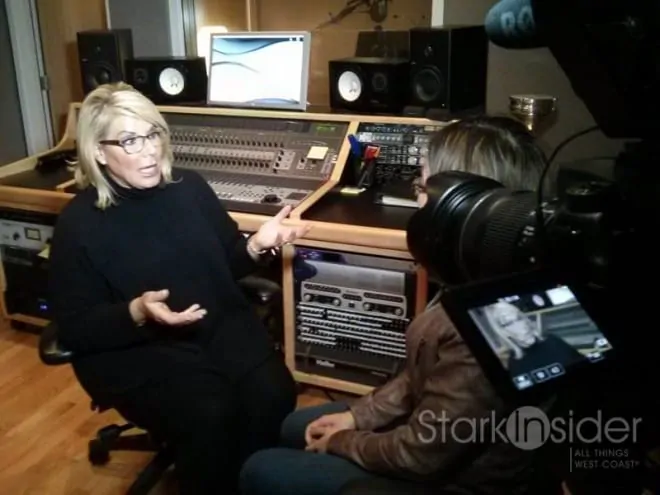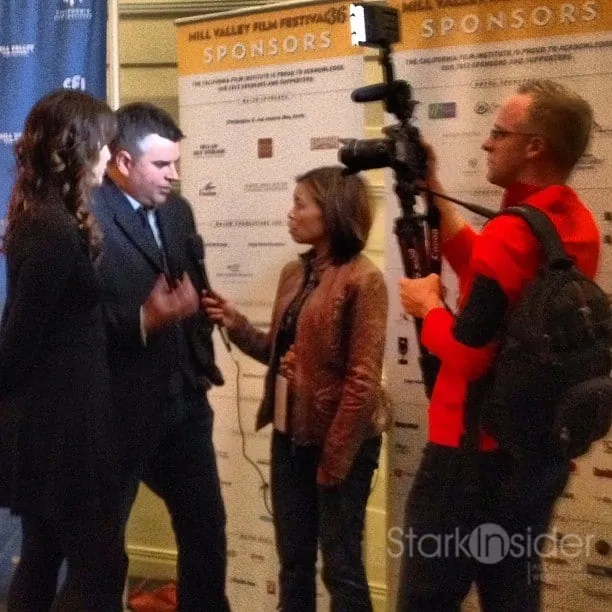Canon’s new EOS 70D changes the game.
Pre-70D there was no real-time autofocus system available for DSLRs – at least not from Canon. That meant shooting run-and-gun videos or documentaries–situations where scenes typically can’t be controlled much and where focus pulling is out of the question–required a camcorder (Canon C100, for example). But with something like the 70D you can have your cake and eat it too: you get the benefit of interchangeable lenses for that nice DSLR style look, plus you can follow a subject around and maintain focus without having to struggle to do it manually.
How Good is the 70D for Video? Very, very good.
No question, in some cases (especially in low light) manual focus will still be preferred, but in my experience, shooting with the 70D over the past few months, I’ve found Canon’s new new dual pixel CMOS auto-focus system exemplary. So much so, that I’m considering putting my Blackmagic Cinema plans on hold… at least for now.
And did I mention the price? It’s a staggering bargain – incredible considering you get world-class design, durability, the famous EF mount. Oh, and that glorious aforementioned auto-focus (the Canon has now adopted for their pro cinema C100 camera).
With the 70D you can opt to lock in to a subject by tapping the LCD viewfinder. Using something called “phase detection” the sensor will track automatically, making minor focus changes. Paired with one of Canon’s ultra-quiet STM lenses, such as the 18-135mm that comes with one of the kits (and the one I frequently use), you get incredible accuracy, yet you can still use something like a Rode Videomic Pro without worrying about lens noise interfering with sound quality.

I upgraded a few months ago from a 60D. I shot hundreds of videos with it. But because I had to manually focus, or half-depress the shutter to get an auto-focus lock at any given moment, getting a final result required a lot of careful post production editing. A lot of my footage was lost due to the fact that the camera was hunting-and-pecking at any given time, trying desperately to find focus lock. With the 70D a lot more of my shots are useable. And, if I wish, I can use The Office/Duplass brothers’ zoom-in/zoom-out style and still have useable shots – the focus system in the 70D is just that fast.
There are some things to watch out for when shooting video with the (relatively) new Canon 70D. Here’s a few tips and various things I’ve learned:
1. Tracking – Know when to deactivate automatic subject tracking
By default the 70D will track subjects and keep them in focus. For the most part it does a great job. The system takes a guess. By using facial identification and/or a combination of objects that take up the majority of the viewfinder, it will lock on what it thinks you are framing as the subject matter. A small green square appears to indicate the auto-focus target. But, as I’ve discovered, this can jump without notice to another object, often wrecking focus on a shot. This can happen frequently especially when doing something artsy – maybe your subject is framed by a large object (a tree, for instance) in the foreground. The 70D might think you want to focus on the tree instead of your tiny subject, far in the distance.
TIP:
Touch the subject on the LCD screen to achieve focus lock. Then deactivate auto-focus by touching the small icon on the lower left button on the LCD. The 70D will confirm tracking is switched off. Now the camera will stay locked on your subject. If you want to simulate focus pulling, turn tracking back on and touch the foreground object.
2. Go manual
When I shoot video with the 70D I’m always in “Manual” (M) mode. With auto you’re at the mercy of fluctuations in any given shot, as the system adjusts on the fly to various light and focal conditions. Manual isn’t as bad as it seems. If you’re shooting at 23.98 fps like me, set your shutter speed to 50. Then, all you need to think about are: ISO and aperture. In general I try to get ISO as low as possible to keep picture quality high. A good allround ISO is 400. Aperture (f-stop), of course, will depend on depth of field and/or available light.
I really appreciate the way Canon has designed its DSLRs.
I really appreciate the way Canon has designed its DSLRs. Access to both ISO and f-stop is easily adjusted, on the fly, with your right hand. Push the ISO button and use the dial to adjust it. For aperture hold down the star and use the dial. Keep an eye on your exposure meter and try to get it in the middle. If you shoot using a Technicolor profile, like I do, then you’ll want to shoot a bit to the right (i.e. slightly overexpose the image). Going manual might sound daunting if you’re new at shooting video, but practice enough and you’ll find it’s the best way to get the best video out of the 70D (and just about any other camera).
3. Your lens must have IS if you’re not using a stabilizer (tripod, steadicam)
If you’re shooting handheld, make sure your lens has image stabilization. It’s next to impossible to eliminate micro-jitters otherwise. I’ve been testing the new, brilliant Sigma 18-135mm F1.8 lens on the 70D (you can see some videos below shot with it). That lens does not have image stabilization. So it pretty much has to be on a tripod, or on a steadicam for practical, useable non-jittery footage. Fortunately the kit lenses from Canon for the 70D are pretty darn good. Sure, they’re not low light champions, but they’re handy all-rounders. You’ll find the 18-135mm STM on my 70D 90% of the time. In low light I’ll pop on a Canon 50mm or the Sigma, knowing I’ll need to stabilize the shot (or use some post processing to fix it as needed).
4. Get a Rode Videomic Pro
Okay, for audio here’s two steps to take if you’re just starting out. Forget trying to use the built-in mic, it’s really not good enough for anything other than scratch audio, or late night staff karaoke parties (in which case the poor audio capture may work to your advantage).
(1) Buy yourself a shotgun mic. The Rode Videomic Pro is perfect for DSLRs (and the Blackmagic Pocket Cinema Camera). The 3.5mm tucks neatly into the audio input (on the left input panel on the 70D). You’ll get highly useable audio.
(2) Consider using dual audio. I love using Zoom H1s. These are portable field recorders you can slip into a subject’s pocket. Add a lavalier mic, and you have an inexpensive alternative to a wireless setup. The downside? You’ll need to synchronize the separate audio files with your master audio. But tools such as Final Cut Pro and Adobe Premiere Pro Creative Cloud have sync capability built in. It’ snot hard. And you’ll get good audio.
UPDATE 10.3.2015: Also, check out the new Rode Video Mic GO (VMGO). Lightweight, and includes the excellent Lyre shock mount.
5. BONUS: Shoot in Technicolor (really!)
The rage these days in indie filmmaking is color grading. A lot of this excitement has come about from an Australian company called Blackmagic Design.
Over the last year they’ve released some incredibly powerful cameras. One is a $2,000 cinema camera (Blackmagic Cinema Camera), the other a pocket model (Blackmagic Pocket Cinema Camera) that sells for half the price. Both are selling like hotcakes, and lighting up the forums with all sorts of glowing praise. What makes them special is they shoot RAW footage. That, plus the sensor’s dynamic range allows for some stunning, film-like output. But… but! The footage that comes out of the camera is, for the most part, unusable. It needs to be processed. Specifically the footage needs to be color graded. That’s because the Blackmagic cameras are designed to output neutral footage (called “log”). Then an expert color grades the footage to taste. Because, like a photograph shot in RAW (versus JPG), there is so much additional information associated with each frame, the image can be tweaked extensively. The result is a high end look, previously achievable using much more expensive cameras, such as RED ($20K+) or Arri Alexa ($100K+). Now indie filmmakers can get results that we’ve seen in films like The Wrestler or Black Swan for far less budget. You just need to know a thing or two about post-production workflow.
You can also shoot in a flat “log” style mode using the 70D. It simulates what I described above, but isn’t completely the same as the Canon does not shoot RAW (it captures footage in h.264 compressed format). I use the Technicolor profile – yes, this is the same, famous “Technicolor” people of film, so rest assured they know their stuff! I downloaded the profile, then uploaded it to my 70D (via a USB cable). When I shoot video (in manual mode remember!) I choose the Technicolor profile. Image look washed out and lack saturation. Later, in Premiere Pro, I use the FilmConvert plugin to color correct and add film stock emulation. You can also use something called “LUT Buddy” to grade the footage.
How Good is the 70D for Video?
Very, very good.
To borrow a popular expression these days, it works a treat.
Canon’s new auto-focus system is wunderbar. I know using “auto” is verboten amongst the film community. But there are times you need it, especially when doing run-and-gun or shooting a documentary. You could setup a follow-focus system and spend $20K with RED, but it’s nice to know you can achieve something professional for far less (granted, at “only” 1080p).
You can learn more about the Canon EOS 70D, and read some very helpful reviews on Amazon.
UPDATE 5.5.2015 – I’ve updated some of my examples below. All shot with the 70D. You can check out my YouTube channel for more. I hope you enjoy your Canon DSLR adventure as much as I have!
SAMPLE FOOTAGE: Canon EOS 70D Videos
PRIORY CONCERT
Style: arts & entertainment segment
Canon 70D with Canon 18-135mm STM. Zoom H1. Rode Videomic Pro
GLAMPING
Style: travel
Canon 70D with Canon 18-135mm STM. Zoom H1. Rode Videomic Pro
KURIOS BY CIRQUE DU SOLEIL
Style: theater
Same gear as above, but interview clips shot with Sigma 18-35mm F1.8
MAD MEN – VINCENT KARTHEISER
Style: interview
This one shot on Canon EOS 60D and a Rebel T2i as second camera (it was difficult to color match them)
You can get a Canon EOS 70D on Amazon for a steal right now.
Happy shooting!
Clinton


